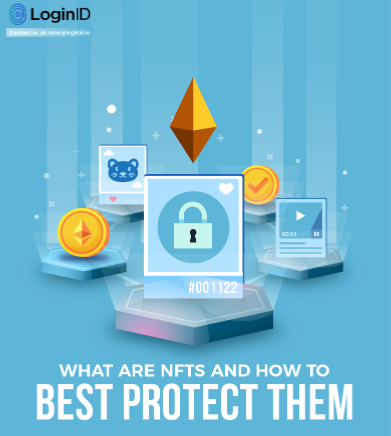Non-Fungible Tokens (NFTs) are specific digital files representing a single value unit. They are unique digital assets that can only be traded for themselves; this is what “non-fungibility” implies in cryptography. In comparison, a fungible asset may be exchanged for another. If you hold one bitcoin, no one will value it differently than any other bitcoin. Individuality would be more precious if only one bitcoin in the world. A picture, for example, is non-transferable. If you switched one painting for another, you would get a new painting even by the same artist.
Blockchain is a decentralized ledger of all network transactions. Digital transactions may be verified using blockchain technology without a central clearing body like a bank. The system verifies transactions using encryption. Most people are acquainted with using blockchain to verify bitcoin transactions. But blockchain isn’t the only way to prove ownership of assets. An NFT is a digit; it might be a sketch, doodle, audio, text, or anything digital. In reality, much of NFT fandom revolves around collecting NFT artwork. Contrary to popular belief, developing and investing in non-fiat currencies (NFTs) are becoming a substantial industry.
First, choose a blockchain platform to “encode” your digital asset. Blockchain technology is used in cryptocurrencies to safeguard and store transaction data in encrypted blocks that create an unalterable chain; no need for trustworthy third parties to confirm deals. NFTs are maintained on the blockchain as identifiers. They may pick which blockchain to keep their assets on. Ethereum is now one of the most prevalent NFT choices. But NFTs are not free; just like you would need to pay for a copyright license to register your work conventionally, you must pay to mint your NFT information in the blockchain or sell it on an NFT marketplace. The charges vary depending on the NFT platform you choose. Because cryptocurrency is used to pay for NFT minting, establishing a crypto wallet is an extra step for NFT makers. When the NFT is available for sale, it may be purchased as an original digital asset. But it does not imply they will own it; only the original file, not a replica. So the NFT will not have copyright protections. The buyer of an NFT owns the NFT, not the original work. An NFT may also be seen for free.
In an increasingly globalized economy, financial institutions are especially vulnerable. KYC laws protect financial institutions against fraud, corruption, money laundering, and terrorist financing. Effective KYC authentication methods are vital to any compliance and risk management program’s success. As stronger regulatory requirements take effect, banks and organizations are dedicating significant resources and effort to KYC compliance procedures. Moreover, due to its compatibility and security, the FIDO2 key allows organizations to adopt a password-free environment swiftly. They work instantaneously and employ a separate cryptographic chip to give the highest level of authenticator assurance, allowing strict compliance. A physical security key on mobile devices required software and a reader before FIDO2. However, major mobile device makers have heavily invested in FIDO2. So a FIDO2 security key may be used on a mobile device instantaneously.
Below is an infographic from LoginID entitled “What are NFTs and How to Best Protect Them.” You may also visit AuthID.ai for more information about technology updates.

